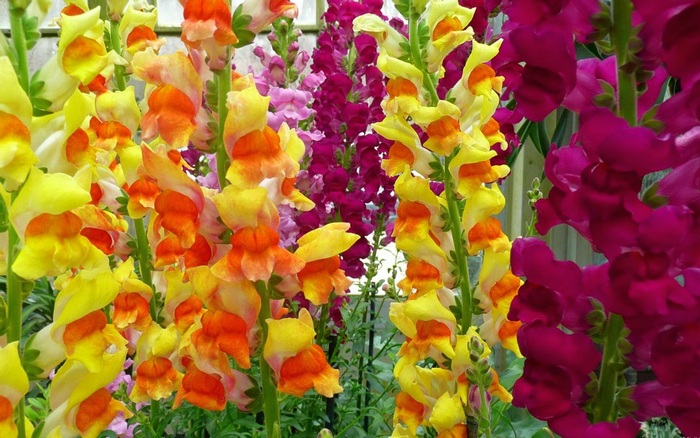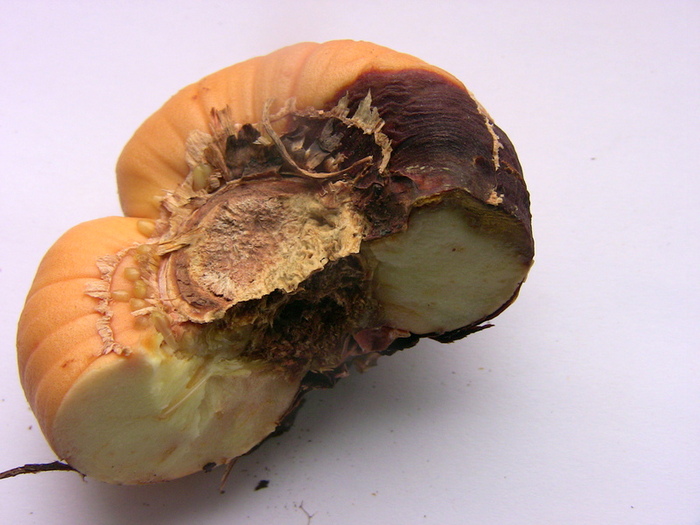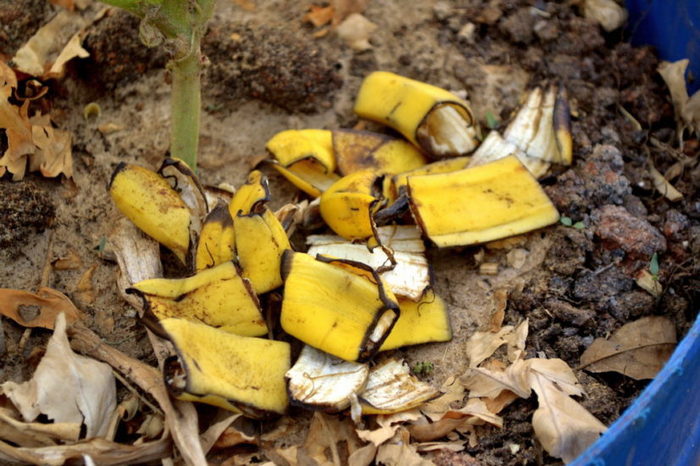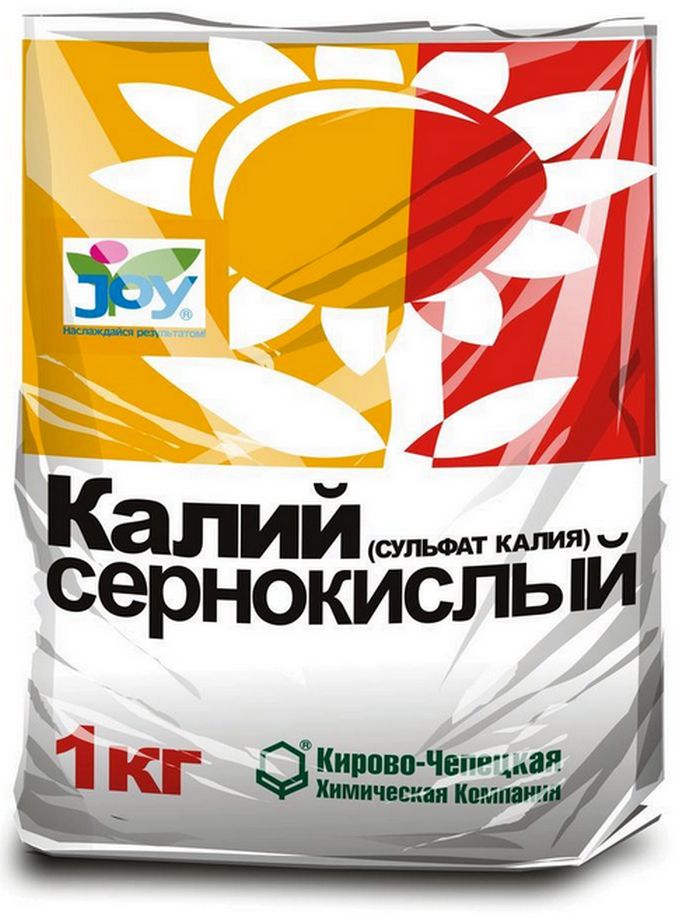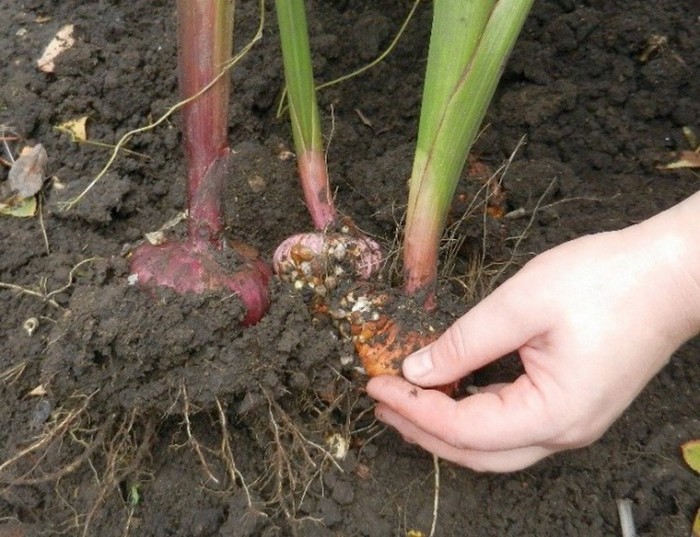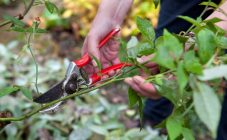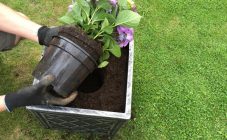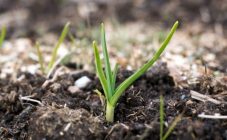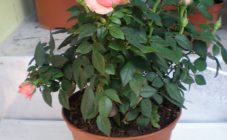Content:
The tall stem, rich, colorful row of flowers and vibrant leaves is a beautiful perennial gladiolus that stands out from other garden flowers. Summer - this is the period when all the forces of the plant are activated, its active growth begins, and it is very important to know how to care for gladioli in the summer, so that all care is only beneficial. The flower is a little capricious to care for, but it's worth it.
Summer gladioli care
Caring for a flower in the summer must necessarily include watering, loosening the soil, feeding and removing weeds. An important manipulation is the garter of the peduncles - immediately after the release of the first flowers.
It is especially important to take full care of gladioli in early July, since the flowering period begins at an active pace, and the plant will need a lot of strength.
Loosening
Some gardeners are negative about loosening gladioli, considering it an unnecessary procedure. However, the benefits of loosening can hardly be overestimated - thanks to it, moisture is retained inside the soil and is enriched with oxygen.
In the hot summer, loosening is carried out at least once a week, during the budding period, the number of manipulations is increased.
Weeding
Systematic weeding is necessary constantly so that the weeds do not take useful substances and minerals for themselves, do not drown out growth. This procedure is especially important during the hours of intensive growth and flowering.
Also, gladioli in some cases require a garter to the stakes, for this you can use a wire stretched in rows along the ridges. Hilling protects flowers from lodging and guarantees better heating of the soil above the roots.
Preventive measures against diseases and pests are becoming an important point in the care of gladioli.
Gladioli have a fairly large list of possible diseases:
- fusarium, or dry rot of bulb tubers;
- sclerotinosis, or dry black rot;
- botrythiasis, either gray or brown rot;
- scab;
- viral diseases;
- root cancer.
Preventive measures consist in proper agricultural technology. They do not allow planting to thicken, since under adverse weather conditions they form a greenhouse effect, which becomes an ideal condition for the development of fungal infections. The method of spraying with copper sulfate protects the plant from many pathogenic microorganisms.
Pest control methods involve the use of special means (karbofos, insecticides), completely removing the diseased plant.
Top dressing
Feeding gladioli is a crucial stage, ensuring their intensive growth and lush flowering.
During the summer, you need to feed the plant at least 3 times, using mainly liquid fertilizers. In the intervals between dressings, foliar dressings are carried out with microelements.
Each feeding has its own goals:
- fertilizing gladioli with nitrogen fertilizers in June promotes active growth and formation of a strong stem;
- potash-phosphorus fertilizers give strength to the plant for a beautiful and lush flowering;
- rotted chicken droppings add brightness and saturation to the flowers.
The sequence of feeding:
- at the very beginning of development - nitrogen (30 g), potassium (20 g), superphosphate (30-40 g);
- in the phase of 5-6 true leaves - nitrogen (10-20 g), potassium (10-20 g), superphosphate (20 g);
- before flowering (exclusively potassium-phosphorus additives).
There is another feeding scheme, which includes 6 sequential procedures:
- 30 days after planting the bulbs, in the presence of 2 true leaves: half a tablespoon of potassium sulfate and urea plus half a liter of chicken droppings are diluted in a bucket of water (per 1 sq / m of plants);
- With 3 formed sheets: ¼ st. l urea, ½ tbsp. l potassium sulfate, 1 tbsp. l of a complex product (soluble Crystallin or Solution), half a liter of chicken manure extract per bucket of water (per 1 sq. / m);
- Top dressing for the prevention of fungal diseases (hard rot, botrytis): 1 tbsp. l. copper oxychloride on a bucket of water (spraying);
- At the end of June, as 5 leaves are formed: 1 tbsp. l. Solution (Crystallina), 1 tbsp. l potassium sulfate per 10 l of water;
- At the beginning of the formation of a flower arrow (be sure to exclude nitrogen): 1 tbsp. l. potassium sulfate and ½ tbsp. l. superphosphate per 10 liters of water;
- In August, the last feeding is carried out, 20 days before the bulbs are excavated: 5 g of copper sulfate, 1 tbsp. l potassium sulfate per 10 l of water.
Folk remedies are popular in feeding, as they are considered the cleanest, ecological products. Ash saturates the soil with potassium and phosphorus, it is used in the first phase of growth. Banana peels are also rich in potassium, for fertilization, you need to dry banana peels in the oven and grind them, add them to the soil before planting the bulbs. An aqueous infusion of banana peel (fresh peels are poured with a bucket of water and infused for 7 days) is used for better flowering.
In the midst of summer, young gladioli need substances that improve root formation and resistance to temperature changes. How to feed gladioli in June for full growth? Water-soluble calcium is considered an excellent option.
Feeding gladioli in July is necessary for lush flowering and the formation of corms, you can feed the plants once a week with a urea solution (1 tablespoon per 10 liters of water).
Many gardeners ask questions, is it possible to fertilize a plant in the last month of summer and what is the best way to feed gladioli in August? In August, potassium magnesium or potassium sulfate is the ideal substance to fertilize flowers.
In addition, every 15-20 days, it is advised to irrigate gladioli with diluted green fertilizer. A beneficial effect on the plant is provided by foliar dressing (spraying) with solutions of boric acid and potassium permanganate (no more than 3 times each summer).
Watering gladioli in summer
Gladioli are very fond of moisture, they hardly survive even short-term dry periods. The root system of the plant lies deep enough, so watering must be thorough, the ground must be moistened at least up to 35 cm deep. Water often and abundantly, especially during the flowering period.
Watering is carried out in the evenings so that moisture does not evaporate from the soil surface. Water as the soil dries up, preferably every two to three days. At an average temperature and during the period of periodic precipitation, it is sufficient to water it once every seven days.
Water is used settled, even better rainwater. Happy to plant and sprinkle. Mulching is an excellent way to retain moisture.
Transplant gladioli in summer
Is it possible to transplant gladioli in the summer, if necessary? It is possible, but highly undesirable. It is better to immediately plant a flower for permanent residence in the spring. If there is an urgent need for a transplant in the summer, then you should adhere to the following transplant scheme:
- preparation of a new site, taking into account all the preferences of gladiolus (moisture, acidity, soil composition), the formation of grooves (holes) and abundant watering;
- water the beds with gladioli to simplify the digging process;
- they dig out bushes with a voluminous lump of earth and transplant into the holes made;
- watered;
- provide shading for 2-3 days.
In the hot period, the flowers do not tolerate such manipulations, spring time is ideal for this.
Tips & Tricks
Do not feed plants in damp cold weather. Fertilizers are applied to moist soil.
Useful tips from seasoned gardeners for growing gladioli:
- it is unacceptable to grow a plant in the same place for more than 2 years;
- when transplanting to another place, the composition of the soil must be changed;
- preference is given to local, zoned varieties;
- close planting of children and tubers is prohibited - the latter will drown out the first;
- observance of the correct planting depth: if insufficient, the stem will fall, and if excessive, there may be no flowering;
- overdried land has the same negative effect on the plant as swampy;
- so that the bulbs are not depleted, it is necessary to cut the flowers into bouquets or remove the ovaries immediately after flowering;
- an important procedure is the digging of the bulbs, which must be carried out on time and properly organize their storage.
Caring for gladioli in summer is not difficult, it only takes a little attention and time, and the flower will bloom magnificently and colorfully, delighting with its unique beauty.
